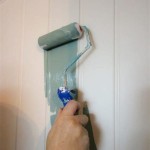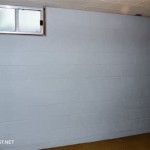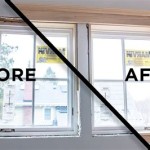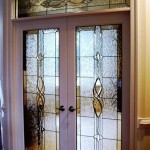How To Paint Interior Cinder Block Walls
Painting interior cinder block walls can seem daunting, but with the right preparation and techniques, it can be accomplished effectively. This process transforms a dull, unfinished space into a clean, vibrant area. Properly painted cinder block enhances the aesthetics and protects the wall from moisture and other potential damage. This guide outlines the necessary steps for successfully painting interior cinder block walls.
Cleaning the Cinder Block
Preparation is crucial for a successful paint job. Cleaning the cinder block surface ensures proper paint adhesion and longevity. Dirt, efflorescence, and mildew can hinder the paint's ability to bond with the surface. A thorough cleaning eliminates these obstacles, creating a receptive surface for the primer and paint.
- Remove loose debris: Use a stiff brush or broom to sweep away loose dust, dirt, and cobwebs.
- Scrub the surface: Mix a solution of trisodium phosphate (TSP) and water according to the manufacturer’s instructions. Scrub the entire surface with the solution using a stiff-bristled brush.
- Rinse thoroughly: After scrubbing, rinse the wall thoroughly with clean water to remove all traces of TSP.
- Address mildew: If mildew is present, apply a mildewcide according to the manufacturer's instructions. Allow it to dwell for the recommended time before rinsing.
- Remove efflorescence: Efflorescence, a white, powdery substance, can be removed with a muriatic acid solution (always wear appropriate safety gear). Apply the solution according to the manufacturer's instructions and rinse thoroughly.
- Allow to dry completely: Before proceeding, allow the wall to dry completely for at least 24 hours, or longer depending on humidity levels.
Repairing Imperfections
Cinder block walls often have imperfections such as cracks, chips, and holes. Repairing these imperfections creates a smooth, even surface for painting. Ignoring these issues can lead to an uneven finish and compromise the structural integrity of the paint job.
- Fill cracks and holes: Use hydraulic cement or an appropriate concrete patching compound to fill any cracks, holes, or other imperfections. Apply the patching material according to the manufacturer’s instructions.
- Smooth the patched areas: Once the patching material has dried, smooth the repaired areas with sandpaper or a sanding block to create a flush surface.
- Remove dust: After sanding, remove any dust with a damp cloth or vacuum.
Applying Primer
Priming the cinder block is essential for proper paint adhesion. Primer creates a uniform surface that allows the paint to bond effectively. It also seals the porous cinder block, preventing the paint from being absorbed into the wall and requiring multiple coats.
- Choose the right primer: Select an acrylic block filler primer specifically designed for masonry surfaces. This type of primer is formulated to fill the pores of the cinder block and create a smooth surface.
- Apply evenly: Apply the primer evenly using a roller or sprayer. Ensure complete coverage.
- Allow to dry: Allow the primer to dry completely according to the manufacturer’s instructions before applying paint.
Painting the Cinder Block Wall
Choosing the right paint and applying it correctly are key to a successful and durable finish. High-quality exterior-grade acrylic latex paint offers excellent durability and moisture resistance, essential for cinder block walls. Proper application techniques ensure even coverage and a professional look.
- Select the right paint: Use a high-quality exterior-grade acrylic latex paint that is specifically formulated for masonry surfaces. This type of paint is durable, weather-resistant, and breathable, allowing moisture to escape.
- Choose application method: Apply the paint using a roller, brush, or sprayer. Rollers offer the best coverage for large areas, while brushes are ideal for cutting in and detailing.
- Apply multiple coats: Apply at least two coats of paint, allowing each coat to dry completely before applying the next. Multiple coats ensure proper coverage and color saturation.
- Maintain consistent thickness: Maintain a consistent thickness throughout the application process to prevent drips and runs.
- Allow proper drying time: Allow the final coat of paint to dry thoroughly before using the space.
Choosing the Right Tools and Materials
Using the correct tools and materials is essential for a successful painting project. Quality tools ensure efficient application and a professional finish. Selecting appropriate materials ensures both the longevity of the paint job and the safety of the individual carrying out the work.
- Brushes: High-quality synthetic bristle brushes are recommended for cutting in and painting smaller areas.
- Rollers: Use a roller with a nap length appropriate for the texture of the cinder block. A 3/8-inch to 1/2-inch nap is typically suitable for smooth cinder block.
- Sprayer: An airless sprayer can be used for large areas and offers efficient coverage.
- Drop cloths: Protect the surrounding area with drop cloths or plastic sheeting.
- Painter's tape: Use painter's tape to mask off areas that should not be painted.
- Safety gear: Wear appropriate safety gear, including gloves, eye protection, and a respirator, especially when working with cleaning chemicals or a sprayer.

Painting Cinder Block Walls In A Basement Or Re Paint Them

15 Most Beautiful Cinder Block Wall Painting Ideas To Refresh Your Interior And Exterior Look Decorating Walls

Painting Cinder Block Walls In A Basement Or Re Paint Them

15 Most Beautiful Cinder Block Wall Painting Ideas To Refresh Your Interior And Exterior Look Walls Industrial Home Offices

Painting Cinder Block Walls In A Basement Or Re Paint Them

Diy Projects And Ideas Cinder Block Walls Concrete Basement Makeover

Painting Cinder Block Walls In A Basement Or Re Paint Them

How To Beautifully Transform Your Cinder Block Wall

Painting Cinder Block Walls In A Basement Or Re Paint Them

Cinder Block Wall Transformation Nooks In Bloom
Related Posts








